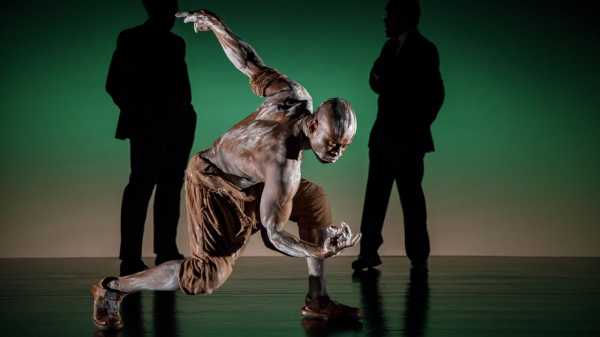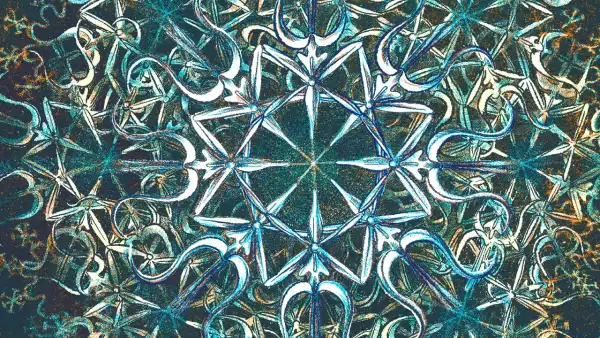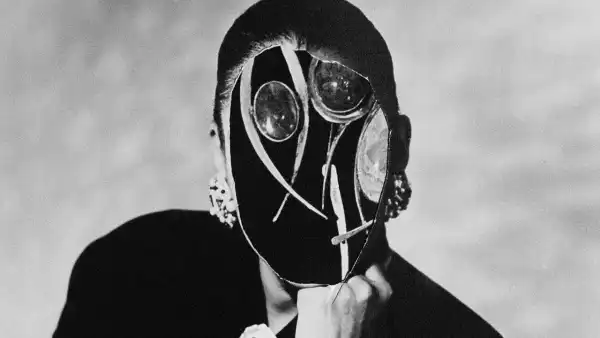
Lynn Nottidzh riveting new play, “Mlima Tale” opens on a moonlit Savannah. Deep elephants, crashing through the theatre. At the heart of African people (Sakhr Ngaujah) begins a monologue. “I was taught by my grandmother to listen to the night,” he says. “To actually listen . . . to the rain in the distance . . . listen to the rustling of brush . . . the screams of friend or foe . . . . Because as you listen, can mean the difference between life and death. It’s true the Savannah, we all learn at a very young age.”
The narrator, which is defined as “Mlima” (“mountain” in Swahili), soon reveals herself to be an elephant. He was shot with poisoned arrows, and closely pursued the poachers intent on cleaning his huge fangs. Tusks, 2.4 meters in length and ninety pounds each, are worth a fortune. The poachers were pursuing him for forty days and close to their weakening quarry. Mlima nostalgic soliloquy is a lament for the life that he feels leaves. “They’re watching me always,” he says. “I hear them all around me. And I run more than I walk.”
Nottidzh known as the author of plays that—as Hilton Als wrote—combines a fable-like quality with a deep naturalism. Michael Shulman described her performances as “irreconcilable about their social problems.” She is an outstanding researcher. For her 2012 Pulitzer prize-winning play, “ruined,” set in the civil war, the Congolese, Nottidzh went to Central Africa three times in order to interview refugees from the savage regional conflicts. “The tale mlima” on poaching ivory and killing of elephants in Africa. Andrew graves (Kevin Mambo), who plays “white Director wildlife,” failures in the explanatory voice long enough to explain that poaching has decreased the population of elephants in Africa by two-thirds in less than fifty years. “The math is simple,” he puts it. “There are more elephants are killed than are born, this means that in less than twenty years they may be extinct”.
Nottidzh told me that she loved elephants from the time she was a child, and that her love is only strengthened as we face them firsthand in Africa. “They are beautiful mystical creatures that remind us of ourselves,” she said. “They are social creatures that form long-term relationships and not solely protect their offspring.” They also, she added, “there are beautiful rituals of burial and are one of the few creatures that return to mourn their dead.”
In 2013, when mass killing of elephants near the peak, Nottidzh met with Director Kathryn Bigelow and discussed Nottidzh makes a play about elephants. “She was so concerned about the situation of elephants” Nottidzh said, “that her body was literally shaking.” Nottidzh talked to Bigelow about how to play, maybe “sympathy”. Initially, Nottidzh thought about the story of forest elephants is in Central Africa, but in may 2014, she heard about the death of Satao, a fifty-year-old man with a famously large tusks are killed by poachers using poisoned arrows in tsavo national Park, Kenya (poaching inside the parks often use arrows instead of rifles, so as not to alert the Rangers). “The story I wanted to tell you,” she told me. Satao was a “giant fangs,” one of only about twenty-five of the remaining elephants in Kenya, is genetically inclined to grow fangs so large that in some cases they reach the ground. Nottidzh creation, Mlima, has huge fangs in real life Satao, but instead focus only on Mlima murder, Nottidzh made the ambitious decision to track down the stolen fangs, each step back along the chain of clandestine operations, their final destination in Beijing.
This story was complex, and to tell him Nottidzh use of dramatic structure derived from the late nineteenth century“La Ronde” by Arthur Schnitzler, in which evidence of sexual interaction between ten overlapping pairs of characters. In each scene, one of the heroes from the previous stage is transferred. In the case Nottidzh in pairwise interactions of the hands through which the tusks pass Mlima. “In every scene there is at least one person in control and one person tries to control,” she told me. “And at some point everyone has the opportunity not to participate, but ultimately chooses to participate for greed.” When Mlima, ultimately, the Beijing high-rise, it is because the owners of the Nouveau riche, entrepreneurs who buy Mlima at the tusks ornament new penthouse—those who really control is like ivory, and the world in General, consumption practices. “The cat, she said, is a metaphor for exploitation.”
Nottidzh wanted to “Mlima tale” with the momentum of the Thriller—especially effective is the scene showing the nervous negotiations between Fu Goshi (Jojo Gonzalez), “information and political” specialist at the Chinese Embassy in Kenya, and Hassan Abdullah (ito Aghayere), sharply dressed businessman Tanzania, leading to Fu Goshi purchase Mlima at the tusks. Fu Goshi looks like a beautiful castle of the seventeenth century ivory carving of the Buddhist goddess of mercy, Guanyin that his father, in China, was hidden during the revolution, but was later destroyed. Knowing that Hassan Abdullah is in possession of the fangs Mlima, he says with a hint that “I always wanted to find something to replace Guanyin.” As the conversation continues, the Ghost invisible Mlima performs a Buddhist dance Guan Yin in the background.
Nottidzh says she found the process of rehearsal that the tale Mlima it was really a Ghost. “How else could we understand a play in which the main character dies in the first four minutes?” she said. A key scene takes place immediately after Mlima killed. One of the poachers, which is a Somali, asked if it is true that the Maasai say that if You don’t give to bury an elephant, the elephant will haunt you forever. Another poacher, busy to cut the tusks Mlima is, refutes this view as “infidels” nonsense, but Nottidzh I was told that the refusal of the poachers to honor the dead mlima was the key to the further dynamics of the game. “That’s why Wamara regional head, who cares about solving the crime of the death Mlima, so concerned that the tusks Mlima not to leave the Park.”
After his assassination, Mlima symbolically become his own fangs. He mottled his body with dust and white paint and becomes a silent presence haunts every subsequent scene, leaving a white mark on each person he meets. The game describes it as a sign of complicity. “You’ll see” Nottidzh told me, “that this gesture always occurs just before or just after the hero decides to participate in cat exchange.”
“The tale mlima”, containing one powerful scene, which breaks the logic of “La Ronde”, and also gives the play greater resonance. Tusks mlima was sold and hidden in freight containers under the cargo of timber. Contraband container sold by the broker in the Kenyan port city of Mombasa and secretly transported to a cargo ship bound for Vietnam. After the translation is done and the ship safely goes coastal waters, Mlima awakens to the rhythm of the ocean, by which he draws a weak, fragmentary spell “memories of an elephant”.
Kade, the son of the site gatimu,
Kabonessa, daughter of Kiserian,
Lakenua, mother Namelok,
Naiponoi, son Nataana,
Njeri, a mother of Waragugu.
Mlima puts pressure on the outside of its container and says: “I Mlima great plains. The eldest of my clan. I was recorded during many days, was adopted by the poisoned arrows. Why do so many of you?! Mumbi? Coco? Can you hear me?”
After listening to the voices of elephant, Mlima can only manage, “Mlima, the father of Gita.”
“He’s fighting to get out,” the stage directions say. “This is a fight that he loses.”
Names and voices from memories of the elephant from across Africa, Nottidzh told me. “From Zimbabwe, Zambia, Sudan, Tanzania and Congo—places where elephants are found”. Names, she said, not Kikuyu, Swahili and many other African languages. The scene is designed Nottidzh explained to have the resonance of the middle passage, the stage of the slave trade in which millions of Africans were shipped to the New world. “It’s not just about the exploitation of African ivory,” she told me. “It’s also minerals, animals and even humans. That operation continues.”
Sourse: newyorker.com






